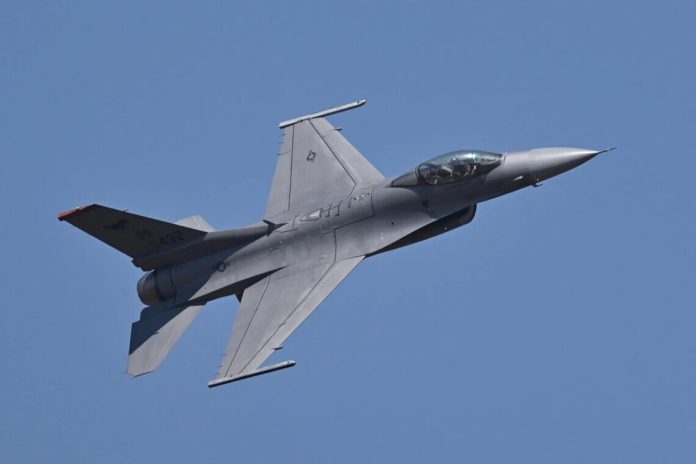The first of the 85 Lockheed Martin F-16 fighters, which the Allies of Ukraine pledged to put to participate in hostilities, should start arriving in the country in the coming days. But this important step is accompanied by risks, as Russian strikes have already caused harm to Ukrainian airfields and combat aircraft. David ex in the column for The Telegraph considers strategic measures that Ukraine can take to protect new planes from Russian attacks.
According to David Exa, smart supersonic fighter jets can reach front -line bases at a very dangerous moment for the Ukrainian Air Force. He notes that in recent weeks, Russian drones and missiles have struck airfields throughout Ukraine, destroying several Soviet model combat aircraft. "To protect the new F-16 from the same infamous fate, the Ukrainian Air Force almost certainly activates their efforts to distract from Russian blows-with the help of counterfeit aircraft,"-EX.
Ex explains that such counterfeit objects may include dummies or real, but non-flying F-16, which will serve as baits for Russian rockets and drones. "These maneuvers are the main element of the fraudulent efforts of both parties in Russia's 28-month war with Ukraine," he said. In Ukraine and Russia, fake tanks, artillery tools and air defense batteries are actively used to distract the enemy attacks.
The problem is that Russian drones and rockets often strike in Ukrainian airfields, not always given whether their goals are real or false. The ex states: “When a Ukrainian or Russian rocket or drone strikes an active battery of an enemy's air defense, battery missiles tend to explode and fly in all directions. When Ukrainians or Russians strike the battery layout of the air defense battery, the explosion is mostly "suspiciously ordinary."
Cases where Russian drones have hit the Ukrainian airfields, confirm this problem: for example, recent blows to the Mirgorod and Poltava air buildings have caused significant losses. “On July 1, the Russian drone noticed six Su-27 fighters of Ukrainian Air Force parked on the runway of Mirgorod. The Russian Ballistic missile "Iskander" was immediately launched, which destroyed two indispensable supersonic fighters, ”EXE reports.
The next day, a similar situation occurred when the Russian drone attacked the air base in Poltava. "After a few hours of observation, the Iskander rocket hit at least damage, if not destroyed, the Ukrainian combat helicopter," he adds. And on July 3, the Russians again struck the Dolgintseve Air Base under Kryvyi Rih, using several Iskander missiles, which confirmed the destruction of both the real MiG-29 and the Su-25 layout.
After a recent attack series, the commander of the Air Force of Ukraine Mykola Oleshchuk stated that his pilots "successfully conducted passive protection measures". “Thank you all who help quality planes and air defense systems. "Iskander" the enemy is less, and the layouts will arrive more, "Oleshchuk said.
In view of this, future F-16 revenues to Ukraine may be accompanied by a detailed deception strategy to reduce the risk of attacks. Norway also transmits Ukraine 10 non-F-16, which can be used as a source of spare parts or bait for Russian blows. Ex summarizes: “These grounded planers can be useful as spare sources. But at the same time, they can help Ukraine's military efforts, being in the open air on frontline airways and greeting Russian attacks. ”


